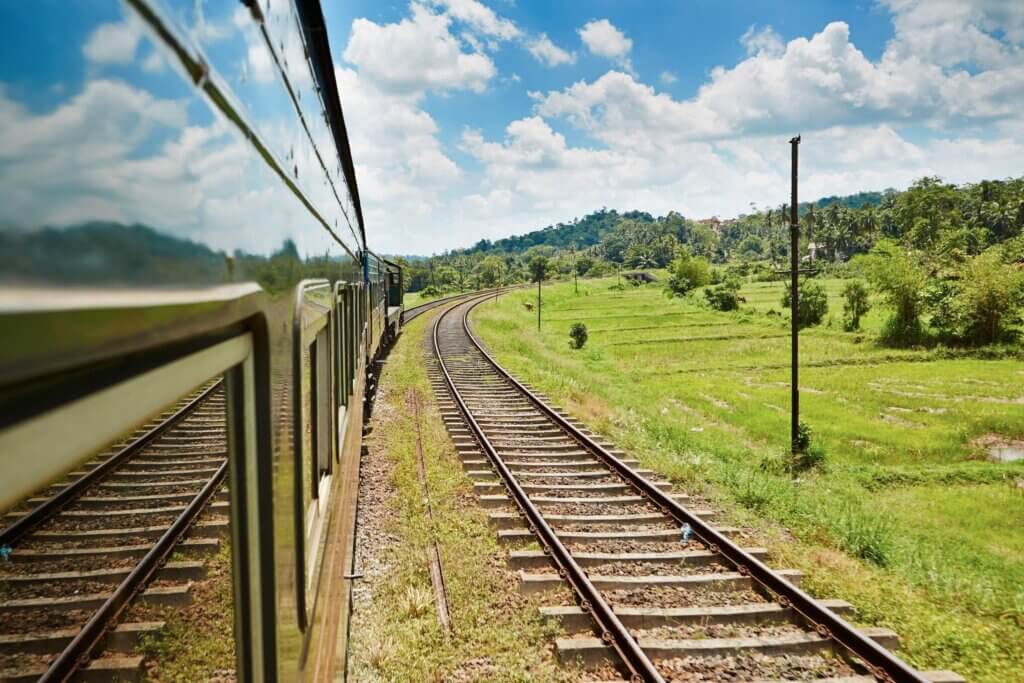
São Paulo State railroads: discover everything about them
The state of São Paulo is the industrial and consumer hub of Brazil. This is due, in part, to past investments in the transport sector and the distribution of a railroad network from the interior of São Paulo to other states. Gradually, they also served as a means of urban locomotion, until the traffic logic of cities adopted an almost complete dependence on motor vehicles.
The railroads in the state of São Paulo, which previously dominated transport, have only a portion of the locomotion of industrialized products and agribusiness. Competing with the road modal, trains still arouse the interest of the sector as an alternative for the future, dealing with energy savings and the practicality that their capacity with loads presents.
Content Index
Contextualization

In the first half of the 19th century, the state of São Paulo was expanding the production of coffee, so that it became its main industry for decades and, therefore, demanded technologies to transport its products to other Brazilian states.
However, it was exports that boosted the coffee industry and turned São Paulo into an industrial hub for its time. It is important to remember that there were no highways connecting the extremes of Brazil or providing access to ports for maritime transport.
With the emergence of this need, added to the initiative to invest in railroads in Brazilimportant railroads were built in São Paulo, such as the Companhia Mogiana de Estradas de Ferro, the Companhia Paulista de Estradas de Ferro and the São Paulo railroad.
The latter was founded in 1867 and attracted workers from all over the country to be built, with the purpose of uniting the São Paulo plateau with the Southeast coast. The São Paulo railroad connected the city of Jundiaí to that of Santos, where there is one of the most important ports in the country.
Since its foundation, 18 railroad lines were built across the state, until the 1930s. They reached their peak in the 20th century, before investment in highways began. Its use, which was mainly aimed at transporting food and technology, became more urban, which contributed to the growth of many cities in the interior of the state.
Railroads were privatized during the 1990s and a few decades ago there were no more urban lines in operation. An exception was the Estrada Ferro-Santos, which had part of its route incorporated into the Companhia Paulista de Trens Metropolitanos (CPTM).
Transport and importance of railroads in SP

Even with the investment in road transport in recent decades, the railroads in the state of São Paulo still transport high-value products for agribusiness and Brazilian industry.Steel products, iron ore, limestone, cement, lime and mineral coal are examples of what has moved and heated rail transport, especially in the São Paulo-Rio de Janeiro corridor, the largest industrial hub in the country and in Latin America.
Despite the concentration of the railroad network located in the southeast, there are still connections with the internal lines in the north and northeast of the country. The agricultural export corridor runs through the junction of the São Paulo state railroads with the Malha Norte, in which bulk grains such as soybeans and wheat are common products. Sugarcane derivatives are also in high demand in the domestic market and depend on this route.
In relation to the road modality, trains still offer numerous advantages. The incidence of thefts, robberies and accidents is low compared to the numbers on highways. In addition to the quality standards that the tracks need to meet for the trains to operate. With highways across the country, this pattern decays and disparities can be found. Other advantages are energy savings when traveling over long distances and high transport capacity.
Current status of railroads in the state of São Paulo

Before belonging to the private sector, the railroads were unified into a large state-owned company, FEPASA. Operating between 1971 and 1998, it unified the Companhia Mogiana de Estradas de Ferro, the Estrada de Ferro São Paulo e Minas, the Companhia Paulista de Estradas de Ferro and other companies belonging to the São Paulo network.
Unable to maintain its operation due to lack of investment, the initiative was canceled and the National Privatization Program of 1992 declared the division of the lines in private companies, which still carry out the public service of railroad transport. The Estrada Ferro-Santos, a small stretch of which belongs to CPTM, was under the responsibility of MRS Logística.
Thus, the railroads in the state of São Paulo, such as the Centro-Atlântica Railroad, which connects the center and the northeast, were acquired by Vale, more specifically VLI Logística. Meanwhile, the South, Southeast and Midwest regions went to Rumo Logística, a company that has the largest extension of railroad lines in the country, in which more than 14% are located in São Paulo.
Currently, Governor João Dória has announced his economic recovery plan involving the railroads of the state of São Paulo.With an investment of R$6 billion, its goal is to increase its transport capacity from 35 million to 75 million tons per year. With the heating of the sector, the state government also points to a direct and indirect increase in the number of jobs.
Conclusion
So far, we have seen that the emergence of railroads in the state of São Paulo was linked to industry and agribusiness, sectors of extreme importance for Brazil, even today.
After a boom that diversified the use of railroads, the railroads in the state of São Paulo underwent deactivation in specific stretches and were unified, until initiatives to privatize them emerged. Still, this mode of transport is relevant to the national economy and arouses the interest of investors, thanks to its transport capacity with high energy efficiency and the efficiency of rails abroad..
Searchs:
https://www.investe.sp.gov.br/por-que-sp/infraestrutura/ferrovias/
http://www.bibliotecavirtual.sp.gov.br/temas/sao-paulo/sao-paulo-infraestrutura-de-transportes.php












